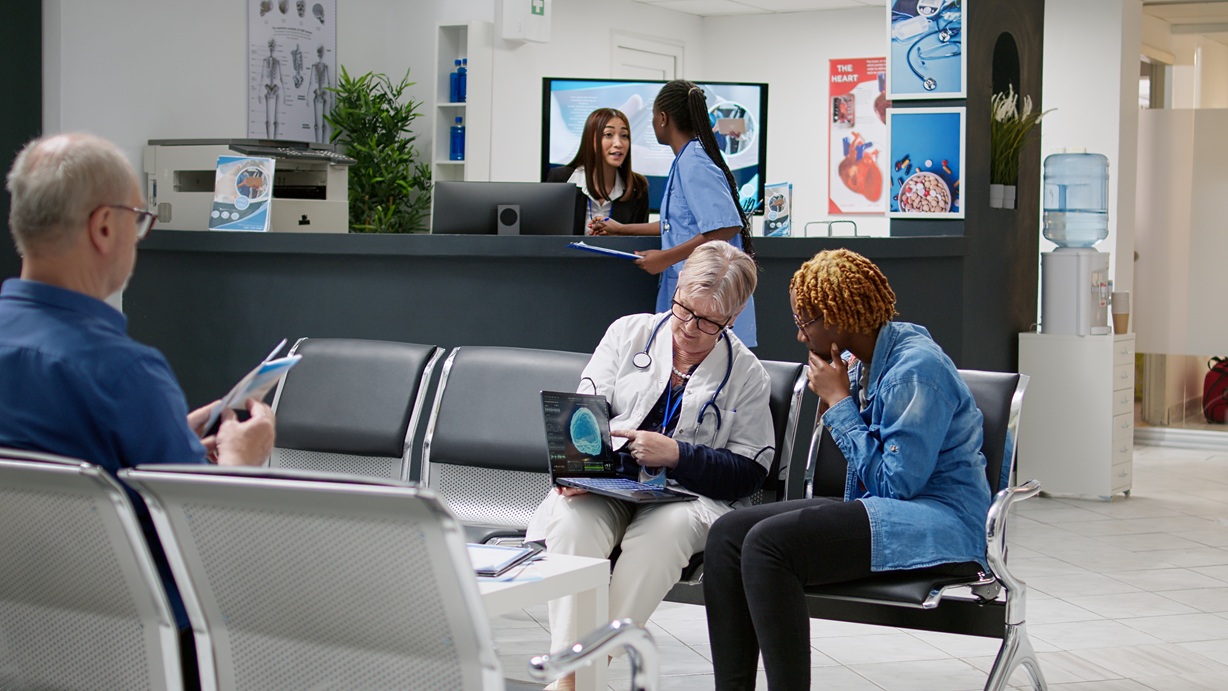The Path to Better Patient Outcomes: Transforming Healthcare Facilities

Healthcare is evolving rapidly, with advancements in treatments and services reshaping how people receive support. However, delivering quality services requires more than advanced technology and skilled doctors. Skilled management plays a key role in creating environments where both patients and staff thrive. Leaders who understand industry trends, ethical practices, and strategic thinking are essential.
Here’s how you can improve patient care at your healthcare facility:
Why Effective Leadership Matters in Healthcare
Strong leadership plays a key role in creating a system that delivers consistent and high-quality services. Managers guide teams, set performance benchmarks, and ensure that everyone works toward shared goals. Their decisions affect everything from patient satisfaction to financial sustainability. Clear communication and well-defined processes help reduce errors and delays, improving overall outcomes. Leaders who understand clinical needs and administrative challenges can create environments where staff feel supported, leading to more efficient workflows and higher morale.
Streamlining Processes to Improve Services
Efficiency plays a critical role in improving patient experiences and operational performance. Clear workflows reduce delays, minimize errors, and help teams provide faster and more accurate support. Standardized procedures make it easier to maintain consistency, while performance metrics allow managers to identify areas for improvement.
Technology also plays a key role in modern healthcare management. Automated systems can handle scheduling, billing, and record-keeping, freeing staff to focus on direct care. Data analysis tools help organizations track outcomes and identify patterns, supporting evidence-based decision-making. By integrating these tools into daily operations, managers can improve efficiency without compromising quality.
Hire the Right Professionals
Healthcare organizations need individuals with advanced training to navigate the industry’s complexities. Programs like a Master in Healthcare Administration prepare individuals to address real-world challenges using ethical decision-making and strategic planning.
This curriculum blends leadership principles with practical skills, covering areas like finance, communication, and resource management. It also emphasizes collaboration and cultural competence, helping future managers understand the diverse needs of patients and employees. These courses focus on improving organizational performance and preparing graduates to lead initiatives that improve efficiency while maintaining compassionate service. This comprehensive approach equips individuals with the tools needed to drive long-term improvements.
Building Collaborative Teams for Improved Outcomes
Teamwork is essential in healthcare, where different professionals must coordinate to deliver comprehensive services. Effective leaders foster collaboration by creating open communication channels and encouraging mutual respect. Regular meetings and interdisciplinary case reviews help ensure everyone stays aligned, reducing misunderstandings and improving continuity of care.
Training programs that focus on leadership and communication help managers create environments where employees feel valued and supported. By promoting a culture of accountability and shared responsibility, leaders can boost morale and reduce burnout, leading to more engaged and effective teams. This collaborative approach not only benefits patients but also enhances overall performance.
Using Data to Drive Smarter Decisions
Data-driven decision-making is transforming healthcare, allowing organizations to improve efficiency and personalize services. By analyzing trends and performance metrics, managers can identify which treatments deliver the best results and adjust protocols accordingly. Predictive analytics can help anticipate patient needs, allowing teams to provide proactive support that reduces complications and readmissions.
Digital tools also streamline administrative tasks, reducing paperwork and freeing staff to focus on direct care. Electronic health records improve communication between departments, ensuring that everyone has access to up-to-date information. By leveraging these technologies, organizations can deliver faster, more accurate, and more personalized services, improving patient satisfaction and long-term outcomes.
Enhancing Patient Experience Through Compassionate Service
Compassion plays a critical role in improving how individuals experience healthcare. When staff show empathy and respect, patients feel more comfortable and confident in their care. This positive interaction can reduce anxiety and encourage better engagement with treatment plans. Personalizing services to meet individual needs builds trust and improves satisfaction.
Training programs that focus on communication and cultural awareness help professionals understand diverse perspectives. Simple actions like active listening, clear explanations, and addressing concerns can significantly impact how individuals perceive their care. By promoting compassion and respect at every level, organizations can create environments where people feel valued and supported.
Developing Resilient and Adaptive Organizations
Healthcare organizations must be prepared to respond to evolving challenges. Resilience involves maintaining high-quality services even during periods of increased demand or unexpected disruptions. Adaptive systems allow teams to adjust workflows, reallocate resources, and implement new protocols as needed.
Leadership plays a key role in fostering this flexibility. Transparent communication, clear decision-making processes, and ongoing training help teams stay prepared for change. Technology also supports resilience by streamlining processes and providing real-time data that guides decision-making. By creating adaptable systems, organizations can continue delivering reliable services under any circumstances.
Creating Sustainable Practices for Long-Term Success
Sustainability is essential for maintaining both financial stability and service quality. Efficient resource management reduces waste, lowers costs, and ensures that organizations can continue meeting the needs of their communities. Simple measures like optimizing supply chains, reducing energy consumption, and improving scheduling can significantly enhance efficiency.
Investing in staff development also contributes to long-term success. Well-trained teams are more productive and engaged, reducing turnover and improving performance. By balancing cost control with quality improvement, organizations can create sustainable systems that deliver consistent, high-quality services while maintaining financial health.
Continuous Training and Professional Development
Ongoing education is essential for maintaining high standards in healthcare. As industry regulations, treatments, and technologies evolve, professionals must continually update their knowledge and skills. Structured training programs provide the knowledge needed to stay current with best practices and emerging trends.
Leadership training is particularly important as managers shape organizational culture and day-to-day operations. Courses that cover communication, ethics, and strategic planning prepare individuals to guide teams, address challenges, and drive performance improvements. By supporting continuous development, organizations can build skilled, adaptable teams that deliver consistent, high-quality services.
Measuring Performance and Striving for Improvement
Tracking performance metrics allows healthcare organizations to assess their effectiveness and identify areas for improvement. Key indicators like patient satisfaction, treatment outcomes, and staff engagement provide valuable insights into overall performance. Regular reviews help teams identify trends, address challenges, and refine processes to deliver better results.
Setting clear goals and benchmarks ensures that everyone understands what success looks like. Transparent communication of progress helps build accountability and motivation. By fostering a culture of continuous improvement, organizations can consistently enhance their services, leading to better outcomes for patients and staff.
Skilled leadership is essential for improving healthcare delivery. By developing professionals who understand both the clinical and administrative aspects of the industry, organizations can create environments where patients receive high-quality services and staff feel supported. Advanced training programs equip individuals with the knowledge and skills needed to drive improvements, leading to more efficient processes, better outcomes, and higher satisfaction. Investing in leadership development is key to building resilient, adaptable organizations that can meet the evolving needs of their communities.


















